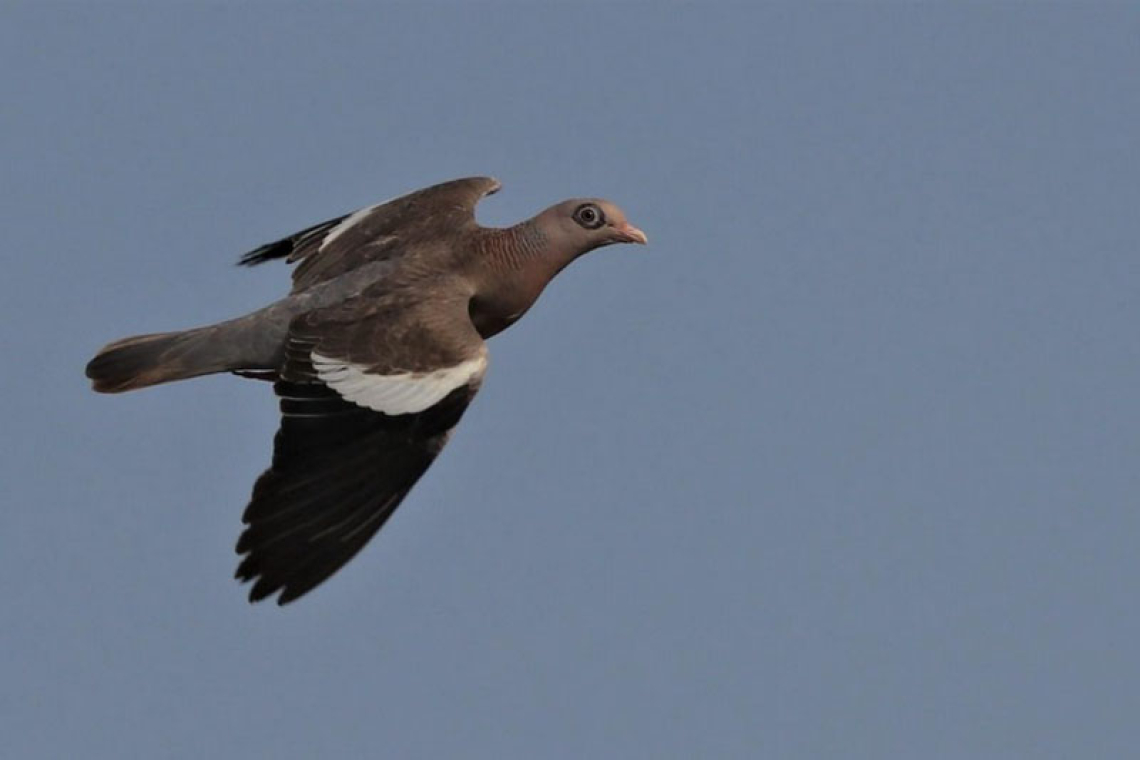The bare-eyed pigeon.
PHILIPSBURG--According to a recent study, the bare-eyed pigeon (Patagioenas corensis) is a threat to biodiversity on the island. Researchers call for the eradication of the species through entrapment or hunting of the birds.
This species, native to South America, was first observed on the island a decade ago. A newly published scientific study has confirmed its rapid and alarming expansion across the island, posing significant ecological risks that demand immediate and robust intervention.
Invasive species are a major threat to biodiversity, particularly in vulnerable insular environments. Introduced either intentionally or accidentally, these species can severely impact native ecosystems, potentially leading to the extinction of local species. Their economic impact is also substantial, affecting agriculture, fishing, tourism, and public health by spreading pathogens.
A study led by Dr. Christopher Cambrone, a scientific project coordinator at the Caribaea Initiative and specialist in the study of columbids in the Antilles, along with two colleagues, provides evidence of the Bare-eyed Pigeon’s progressive invasion since its introduction to St. Maarten.
The study, which relied heavily on data collected through “citizen science,” highlights the bird’s distinctive large blue circles around its eyes, making it easily recognizable. This data, compiled on platforms like eBird, traced the species’ expansion across the island.
The first sighting of the Bare-eyed Pigeon on Saint-Martin was recorded on January 21, 2013, near “Salines d’Orient” in the north-east of the island. Observations have significantly increased since then, with only about twenty reports between 2013 and 2019, but more than 60 between 2023 and early 2024.
The spatial expansion initially concentrated in the northern and western regions of the island has now spread south, accompanied by habitat diversification from coastal areas to forested and urbanized regions. The population size has also increased, with multiple individuals now observed more frequently.
While the possibility of multiple introductions cannot be ruled out, the population increase and habitat diversification suggest the species is reproducing on the island from a small number of initially introduced individuals. This hypothesis is supported by the observation of an individual nesting in an urban area.
According to the researchers, the proliferation of the Bare-eyed Pigeon threatens native bird species, particularly pigeons and doves, through competition for food and nesting sites. The species’ adaptability to urban environments further increases its potential for regional expansion.
Scientific data indicates a narrow window for effective eradication of invasive species, limited to the early years of establishment. Beyond this period, control measures become exceedingly costly and challenging, the researchers warned.
The study’s authors urgently call on local and regional authorities to take immediate action to manage this invasion. They recommend the rapid eradication of the Bare-eyed Pigeon in St. Maarten, suggesting trapping as a potential, though non-selective, method requiring significant investment. Another suggestion is to place the bare-eyed pigeon on the list of hunt-able species in St. Maarten.
The authors also advocate for close cooperation between administrative authorities on the French and Dutch parts of the island to coordinate eradication efforts and public awareness campaigns.







